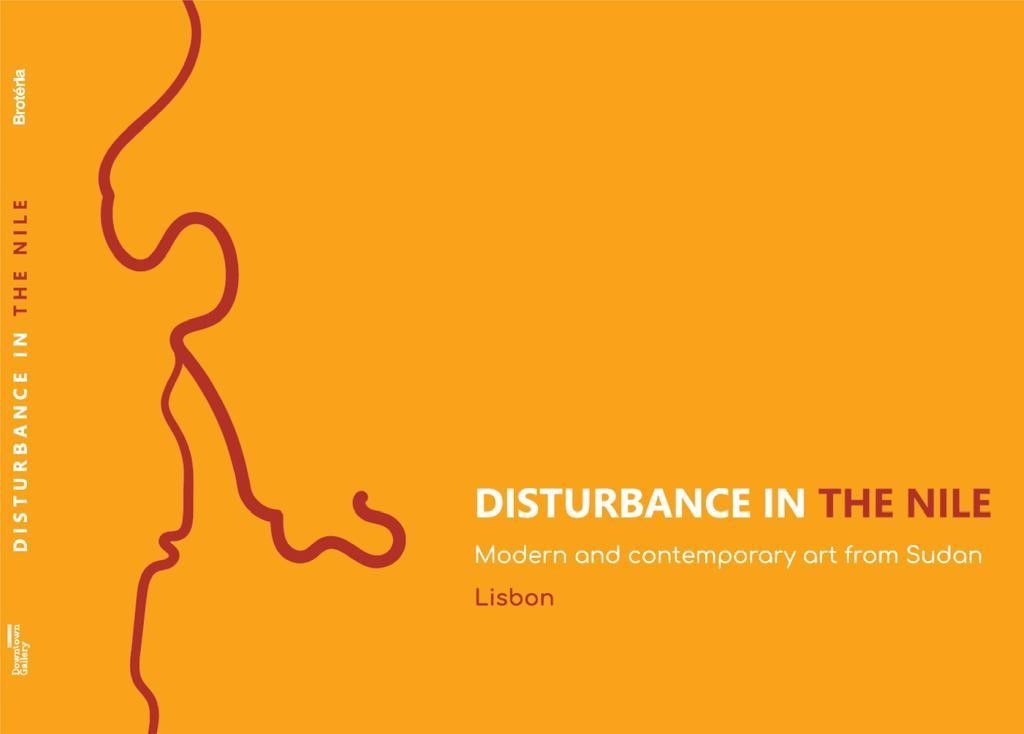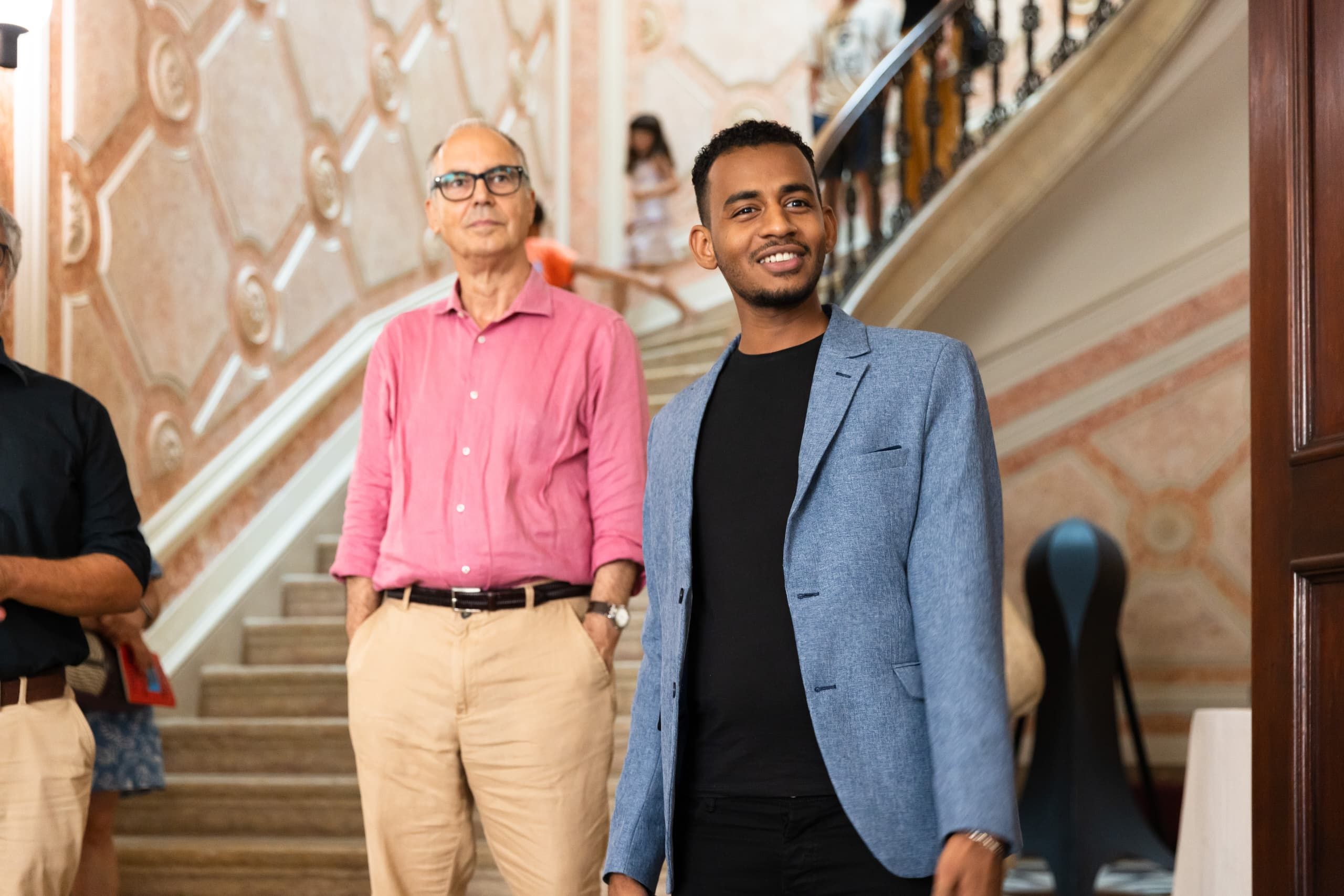
Image credits to Downtown Gallery and Broteria Gallery
Curators are changing the game for the growing Sudanese art market in a fundamental way.
I thought of this after closely working in the art field for more than a year. Curators are entrepreneurs, creative thinkers, and marketers by heart, yet in the utmost advanced and sophisticated manner.
Historically, art shows in Sudan used to be set and organized entirely by artists themselves, until curators stepped in as marketing intermediaries, connecting narratives and professionally raising standards, moving art closer to collectors, and shortening the gap between artists and their audience. Viewers cannot mistake their efforts in accelerating the growing ecosystem and enriching the cultural landscape through their curatorial works and art projects.
In the case of fine art in Sudan, curators hold significant weight in the market given the fact they also occupy a special role as gallery owners, further empowering their position as gatekeepers in many scenarios. I have always had the wildest dream to document the role of modern curators through deeper analysis, tracing back the steps of early masters all the way down to the current practitioners, and their historical relations with two sides of supply and demand.
However, on the 15th of April, a war erupted in the capital city of Sudan, Khartoum, as a result of ongoing hostilities between the Rapid Support Forces (RSF) and the Sudanese Armed Forces. This situation posed a significant threat to the lives of millions of individuals, exposing them to the danger of death and forced displacement. Despite the adversity and uncertainty, curators continue to play a crucial role in transforming the Sudanese art market even during conflict.

Rahiem at the exhibition held in Portugal. Source: Eduardo Sousa Ribeiro
Rahiem Shadad, a former mechanical engineer, is considered to be Khartoum's leading curator. He impresses all who interact with him, due to his creative open minded mentality, serenity and thoughtfulness.
Researchers deemed his name a sufficient passport to explore the current artistic scene in Sudan, as well as gain access to cultural resources and publications. Despite facing numerous challenges, Shadad has been able to carve out a niche for himself and has put Sudan's art scene on the global map and brought awareness to the state of the Sudanese artists' community during the war.
He curated two ambitious international exhibitions - one in Lisbon, Portugal, and the other in Cologne, Germany - which drove the world's attention to the artistic resilience of the Sudanese painters and fostered cultural exchange. In this article, I will shed light on these unique events that have captured the news attention for a while.

The Portugal exhibition poster. Source: Downtown Gallery
"Disturbance in the Nile" is an exhibition that was held in Lisbon, Portugal in July 2023 and it provided a comprehensive overview of the contemporary Sudanese art scene, highlighting the struggles and triumphs of artists in the face of political and social turmoil. The exhibition was the first of its kind and a pioneer artistic collaboration between a Sudanese gallery and its international counterpart. It aimed to showcase the talents of both emerging and established figure artists.
This exhibition not only attained good critical reviews but also featured international news with over eight interviews and other various coverage snippets. It declared a sort of intellectual curatorial act after observing the uncertain political turmoil of Sudan and the consistent resilience of its artists against the bitter situation.
Disturbance in the Nile reflects the never settled situation that has become a defining feature of this region. Therefore, it was no surprise to see the exhibition accidentally synchronized only a few weeks after the outbreak of war in Khartoum in April 2023. The exhibition brought forth a range of emotions and illustrated Sudan's state of the art industry since independence. The audience seemed most impressed by the great maturity and authenticity of the Sudanese contemporary movement. In this exchange, we learn more about the exhibition preparation, mission and more from Rahiem Shadad.
Andariya: Can you share your journey as a curator amidst the challenging circumstances of the war in your home country?
Rahiem Shadad: Throughout my life, spaces have always played a significant role in shaping my memories. Therefore, losing the gallery that I had worked tirelessly to develop over the years, and renovating it to its pre-war state, was an incredibly difficult pill to swallow. I am deeply attached to every aspect of that space. However, after some time had passed, I came to realize that while the physical space may be gone, the memories of all the exhibitions we held remain and the relationships we built with the artists are what truly matter. I am grateful for the dedicated efforts we put into digital archiving for all the paintings, exhibition catalogs, and documents from our beautiful four-year journey.
When the war broke out, I felt responsible for taking the lead in exposing the artists’ suffering by amplifying their voices and preserving those stories for future generations. This endeavor has also taken a personal toll on me. I have begun to document my own emotional experiences, including when my home and gallery were looted by the RSF, as well as the day my sister was able to escape the war alone. These negative and traumatic experiences have left a lasting impact on me.

Downtown gallery in Khartoum before the war. Source: Mahasin Ismail
Andariya: How did you conceptualize and curate these two international exhibitions that brought attention to the state of art in Sudan?
Rahiem: We had been diligently working for a year and a half to bring the "Disturbance in the Nile" exhibition to fruition in Portugal. The primary objective of this show was to illustrate how multiple generations of artists have been producing art for years amidst an extremely unstable and tumultuous atmosphere, which is a prominent feature of this geographical region. The title Disturbance in the Nile hints at the rise and fall, the ups and down movement of the Nile, which makes it difficult to forecast. Similarly, the state of Sudan has been economically, politically, and socially unstable. Although it is a bitter fact, as I stated during the inauguration speech of the show, we must seize this opportunity to celebrate and acknowledge the resilience and triumphs of those artists amidst adversity. Let us shine a light on what is happening in Sudan, rather than merely showing sadness and empathy.

Arrival of the artworks in Portugal. Source: Downtown Gallery and Broteria Gallery
Andariya: What major challenges did you face in organizing these exhibitions during times of conflict?
Rahiem: One of the most challenging logistical issues encountered during the preparation for the exhibition "Gold of the Grandmother" in Cologne was the transportation of certain paintings by artists who were still located in Sudan. For instance, the artworks of Mohammad Ohaj, a Sudanese artist, had to be shipped from Port-Sudan, where he currently resides, all the way to Germany. This task was complicated due to various restrictions and limitations, including the absence of shipping companies and direct flights, as well as the requirement for in-person handling. Undertaking this journey was one of the most difficult and risky challenges I have ever faced, as it relied on the assistance of random individuals. Unfortunately, by the time the artworks arrived in Germany, the exhibition had already been on display for two weeks. To address this issue, we documented all the conversations we had with the eight individuals involved in the transportation and attached screenshots of these conversations to the artwork.
Andariya: How did you select the artists and artworks to be showcased in these exhibitions?
Rahiem: I chose the artists based on the concept, not the other way around. So, it was first a pure concept before determining which artist could best convey the intended message. As a result, viewers were able to witness a diverse range of artistic expressions that discussed the state of a country and its people. The exhibitions effectively showcased the evolution and progression of the Sudanese contemporary movement across various generations.
Andariya: Can you share any memorable or significant moments during the exhibitions that made a profound impact on you or the visitors?
Rahiem: Both exhibitions had a significant impact. The exhibition in Germany had a powerful impact on social media, as it was shared by Sudanese people and influencers, generating widespread discussion. In contrast, the exhibition in Lisbon had a greater impact on the press, with coverage on Portuguese national television and radio, as well as in major newspapers such as Publical. The exhibition also received attention from various podcasts and independent websites, attracting a diverse audience. A simple Google search of the exhibition name would yield numerous publications across multiple pages, a testament to its impressive reach.
However, the most emotionally significant moment for me was during the talk accompanying the art session. I was pleasantly surprised to see a full house, including university professors, notable political activists, researchers, curators, art historians, different ambassadors, Arab cultural influencers, and enthusiastic art students. The audience posed a variety of questions, and I made sure to provide factual answers based on transparency.

Rahiem at the Portugal exhibition. Source: Eduardo Sousa Ribeiro
Andariya: Can you give us more insights about the performance show in Cologne, Germany during “The Grandmother’s Gold”?
Rahiem: When I did the live performance in Cologne, it was my first time participating as an artist rather than solely as a curator during an art show. My installation piece was centered around the theme of losing our homes and the physical archives that we hold dear. I have pictures of my family hanging from the ceiling, all of which were taken inside our house. Underneath on the ground, I painted sort of a diagram or blueprint of our house. I requested the assistance of a friend to cut the photos with scissors while I sat below, observing as he discarded them onto the floor. Once he had finished, I collected the photos and began taping them back together. I invited the audience, despite the fact that they were predominantly Germans, to join me in taping the pictures while I spoke to them in Arabic. My intention was to highlight how language can sometimes create a lack of empathy and to encourage people to overcome communication barriers and view others simply as human beings by fostering empathy, compassion, and support. After we had finished taping the pictures, I asked the audience to place them inside my bag. Then I left the space, conveying the message that memories are personal and cannot be taken away from us. Having a support system is crucial in fostering healthy nostalgia as opposed to traumatic nostalgia. The experience was emotional, and I believe it left a lasting impact on those who witnessed it.
Conclusion
Despite war costing Sudanese communities severe losses, art rises as a tool of expression, creating community dialogues and empathy towards Sudan to amplify efforts to end the war. It is encouraging to see curators like Rahiem Shadad mobilizing Sudanese artists in Sudan and beyond to tell their stories despite the losses and pain. Despite the challenges, artists produced profound work for various audiences, to remind the world that Sudan is going through a traumatic war and empathy, compassion and support can go a long way in a fragmented world. It is crucial to celebrate the artistic resilience and determination to be part of peace building rather than warmongering.